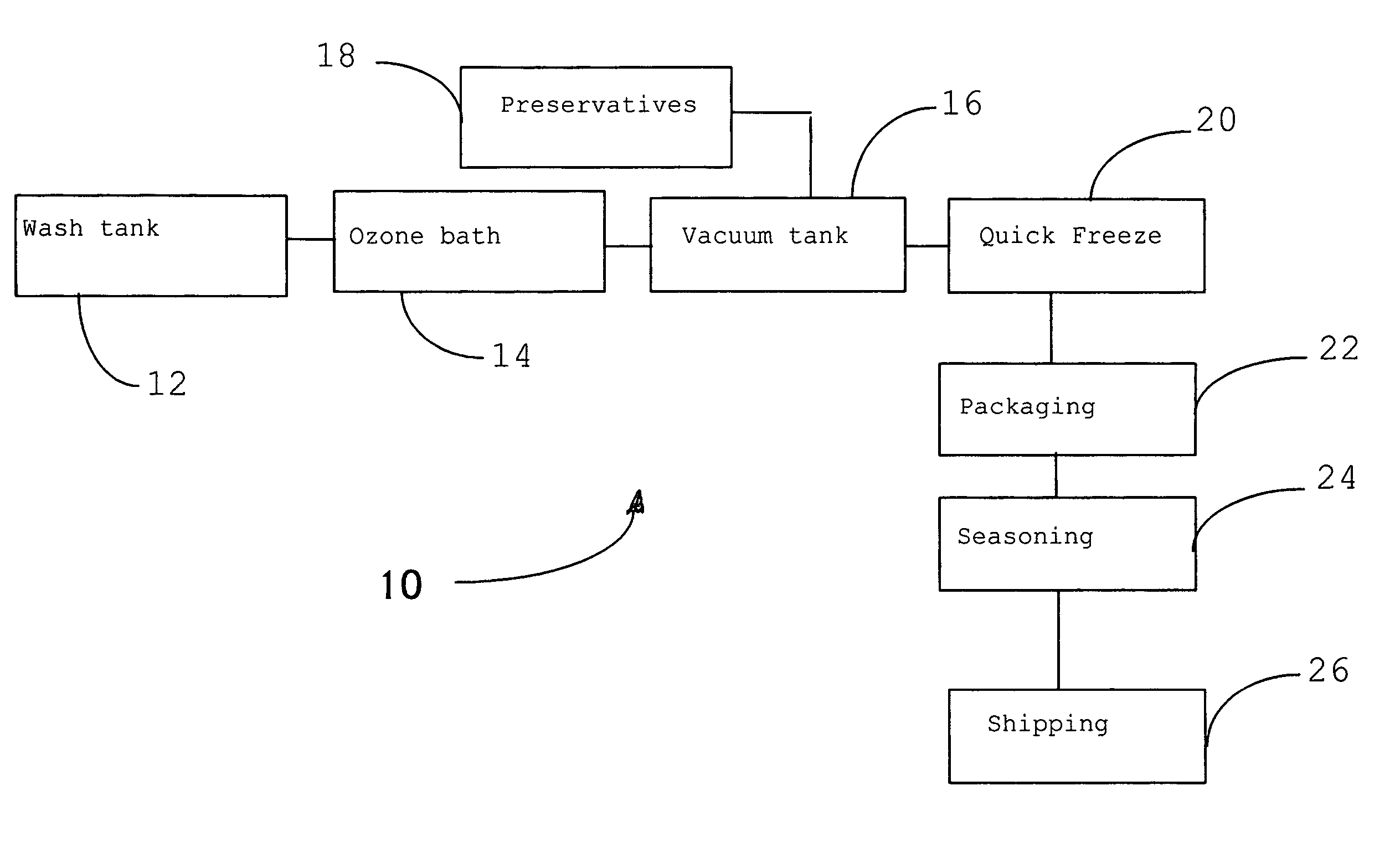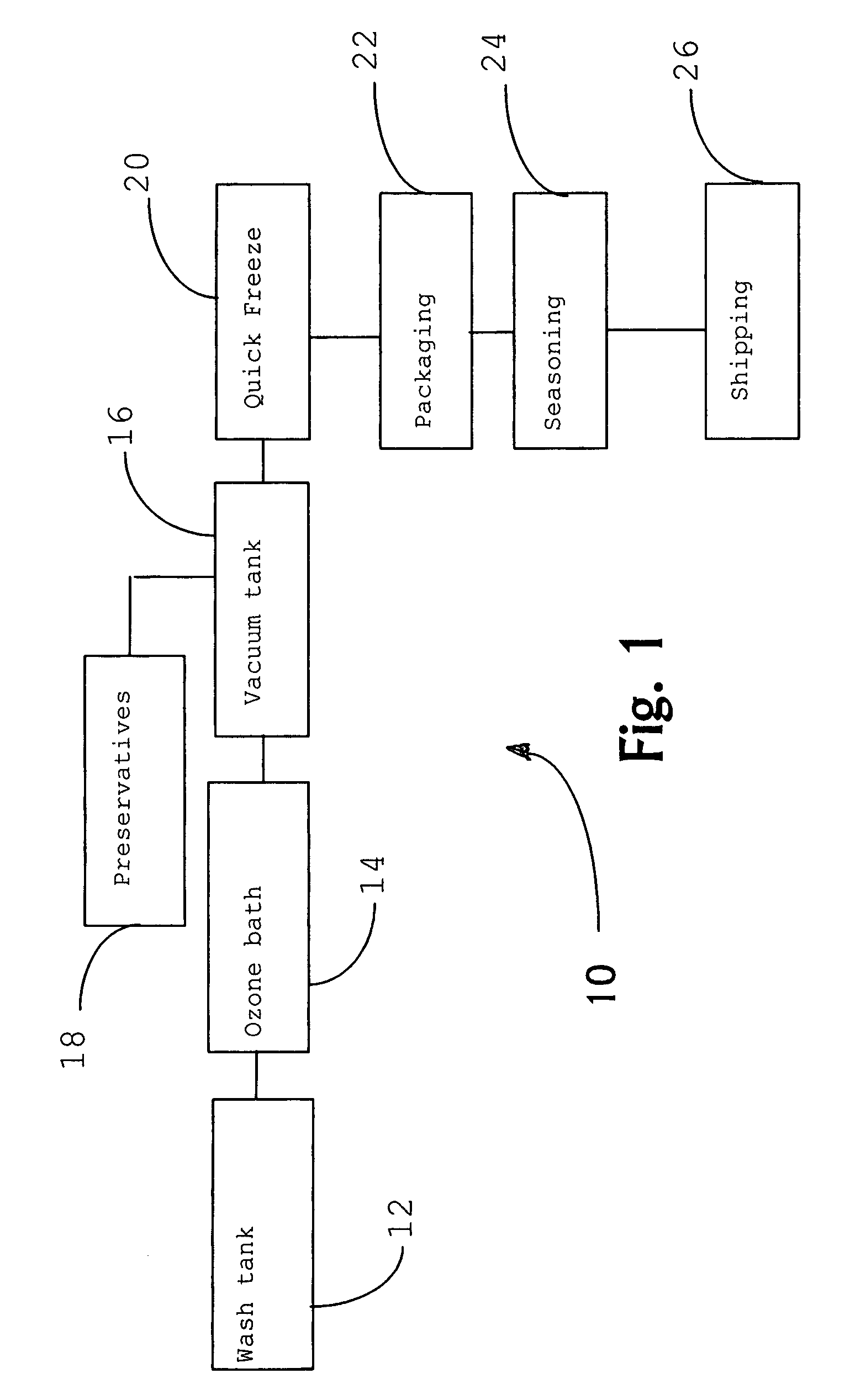Crustacean seafood process
a technology of crustacean and process, which is applied in the field of preparation and preservation of live crustaceans, can solve the problems of not always having access to live or fresh seafood, unable to stave off bacteriological degradation of the product for any significant length of time, and unable to produce rancid or bland products
- Summary
- Abstract
- Description
- Claims
- Application Information
AI Technical Summary
Benefits of technology
Problems solved by technology
Method used
Image
Examples
Embodiment Construction
[0018]5.1 The crustacean process 10 begins with a wash tank 12 where the crustaceans are initially deposited in clean running water a few inches deep for a sufficient period of time to allow the crustaceans to pass clean water over their gills and to remove any external contaminates. The water may be filtered and recycled if desired. The water may also be chilled to retard crustacean activity. However, animal activity is important in the sanitizing stages. A purging agent and anti-bacteriological agents may be mixed with the water, but in most cases this is unnecessary.
[0019]5.2 After an appropriate time, depending on the type, size and degree of contamination of the crustaceans, they may be conveyed from the wash tanks to an oxidation / ozone bath 14 for pathogenic and bacteriological decontamination. Preferably, the crustaceans are brought into contact with a solution of ozonized water in at least one treatment tank fed with ozonized water. Sufficient space within the oxidation tank...
PUM
 Login to View More
Login to View More Abstract
Description
Claims
Application Information
 Login to View More
Login to View More - R&D
- Intellectual Property
- Life Sciences
- Materials
- Tech Scout
- Unparalleled Data Quality
- Higher Quality Content
- 60% Fewer Hallucinations
Browse by: Latest US Patents, China's latest patents, Technical Efficacy Thesaurus, Application Domain, Technology Topic, Popular Technical Reports.
© 2025 PatSnap. All rights reserved.Legal|Privacy policy|Modern Slavery Act Transparency Statement|Sitemap|About US| Contact US: help@patsnap.com


